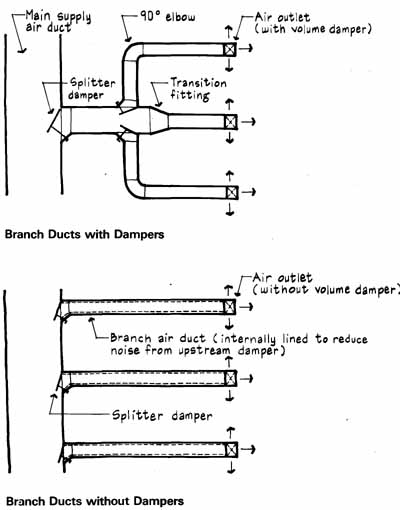AMAZON multi-meters discounts AMAZON oscilloscope discounts
Examples of air duct layouts with reduced potential for cross talk and duct-generated noise are shown below.
Cross Talk

Poor Duct Layout; Improved Duct Layout
To prevent cross talk between adjacent sensitive spaces (e.g., radio/TV studios, music practice rooms), use separate supply and return air branch ducts that are internally lined with fibrous insulation and /or have sound-attenuating mufflers installed in the common path. The improved duct layout shown below has far longer distances of lined duct between adjacent air outlets (or inlets). In addition, cross talk will be further reduced by two lined 900 elbows and two tee fittings within the common path through the supply air ducts serving adjacent rooms. The poor duct layout illustrates a crosstalk-prone situation where straight duct runs occur above sensitive spaces. Layouts with short direct connections between rooms should be avoided.
Duct-Generated Noise
The example shown below of a supply air branch duct layout without dampers will produce considerably less noise because the volume dampers have been removed and two splitter dampers relocated farther away from the air outlets. Air turbulence also will be reduced because there are two less 900 elbows and one less transition fitting.

Branch Ducts with Dampers; Branch Ducts without Dampers
Reference: G. C. Murphy, Practical Aspects of Ductwork Design,” ASHRAE Journal, October 1976.
Next: Glass-Fiber Duct Linings
Prev: Cross Talk